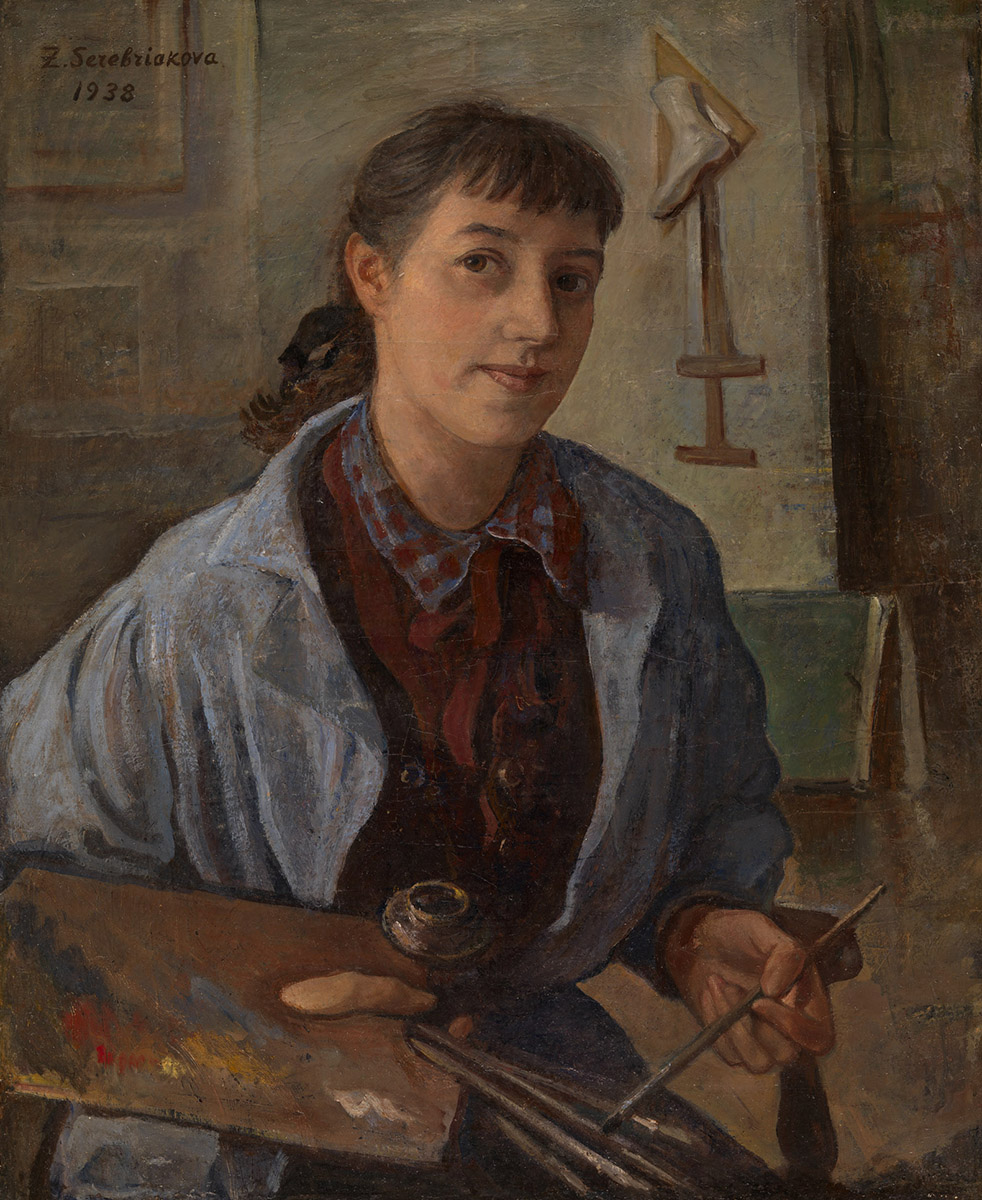MacDougall Auctions 2-3 December 2009
2 December 2009

* 219. SEREBRIAKOVA, ZINAIDA 1884-1967
Self-Portrait signed and dated 1938, also stamped twice by Z. Serebriakova's atelier and numbered "20F/2248" on the reverse
Oil on canvas, 73.5 by 60.5 cm.
200,000-300,000 pounds
Provenance: The Serebriakova Foundation.
Anonymous Sale, Sotheby’s London, November 2001, Lot 120.
Related literature: For similar works, see V. Kruglov, Zinaida Serebriakova, Zolotoi Vek, St Petersburg, 2004, pp. 65, 101, 190.
Serebriakova produced a great many self-portraits in her time. They reflect the artist’s life and offer an account of her feelings and thoughts, creative pursuits and objectives, as well as of a love for her children and a penchant for games and dressing up.
The work offered for the auction represents an important turning point in the artist’s oeuvre. It was executed soon after the closing of a large exhibition of Serebriakova’s works in the gallery of J. Char pentier which despite its impressive contents did not yield material success. The artist was clearly painfully aware of her separateness from the artistic life of Paris which had only intensified over the years, but she had no wish to change herself. Alongside commissioned and non-commissioned portraits and still-lifes, she increasingly began to resort to painting self-portraits, with which she attempted to seize the transience of time and track its imprints not only on her appearance, but also on her growing skill and in the changing of her own outlook. A letter written in May 1938 to her children who had remained in Leningrad, is a testimony to how Serebriakova assessed the quality of her self-portraits: “But what rubbish my ‘self-portrait’ has turned out to be yet again!! I never knew that I was capable of producing such a mediocrity! My dear children, I implore you to destroy it…”
In painting the self-portraits, Serebriakova is clearly setting herself different objectives. From an artistic viewpoint, the 1938 Self-Portrait is outstanding: in it, we no longer see the young, carefree woman of the self-portrait At the Dressing Table, or the romantic young lady of the Young Woman with a Candle. Rather, we face a mature artist. Serebriakova depicts herself at work, with paint-brushes in her hand. There is nothing deliberate in her choice of setting or her dress; moreover, paraphernalia neither underscores the exclusiveness of her craft, nor diverts the viewer’s attention from the artist’s radiant and serene expression.
The portrait attracts with its immediate, captivating simplicity of feeling, its lyricism and tranquillity of a human being living in spiritual inner piece. In this self-portrait, Serebriakova achieves the confluence of the material and the ideal, a feature that distinguishes a true masterpiece.
Dmitry Sarabyanov wrote that Serebriakova “is quite unique in her distrust of the mirror. It is of no concern to her that her left hand in the mirror becomes her right, and that it is her left hand…that holds the paint-brush. Serebriakova paints as she sees it. For her, the reflection of objects in the mirror is not an illusion, not a vacillating ephemeral phenomenon hovering on the boundary between reality and imagination, but a reality that is just as legitimate as that of the items themselves… Serebriakova never placed her own personality at the centre of the universe, did not impose her ideas about the world or her lifestyle upon anyone, and certainly did not pride herself on her features or her body.
A self-portrait for her was simply a sign of one’s own existence in a world of nature, people and things – in a world of equivalencies. For the artist, it was the most ‘immediate’ manifestation of the existence of reality. The idea behind her self-portraits is surprisingly simple: it could even be interpreted as foolishly naïve, if this simplicity had not expressed the truth. In the second decade of the 20th century, the artist startled her contemporaries by reminding them how the truth could be expressed through simple words and acts without the need to resort to contrivances and subterfuge. Yet she was able to do this – and, moreover, she did this so naturally, without any particular effort. All she had to do was strive towards a conduct that would not dissipate what had purely and simply been conferred upon her by nature.”
Notes on symbols:
* Indicates 5% Import Duty Charge applies.
Ω Indicates 20% Import Duty Charge applies.
§ Indicates Artist's Resale Right applies.
† Indicates Standard VAT scheme applies, and the rate of 20% VAT will be charged on both hammer price and premium.